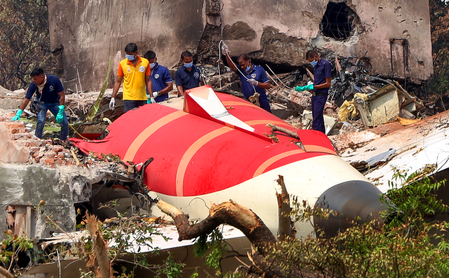Air India Boeing 787-8 aircraft’s engine fuel control switches transitioned from ‘RUN’ to ‘CUTOFF’ position within three seconds after lift-off, leading to the plane crashing in just 34 seconds after taking off from Ahmedabad on June 12, according to the initial probe report by the Aircraft Accident Investigation Bureau (AAIB) released early on Saturday.
Both fuel control switches supplying fuel to the engines of Air India flight 171 were turned off in quick succession, shutting down both the engines. According to the report findings, one of the pilots can be heard on the cockpit voice recorder, asking the other why he cut off the fuel, to which the other pilot responded by saying that “he did not”.
“Fuel switches for engines 1 and 2 were returned to ‘Run’ within seconds. EGTs for both engines rose, indicating relight efforts. Cockpit voice recording indicates confusion: One pilot asked, “Why did you cut off?” The other responded, “I did not do so,” suggesting possible miscommunication,” the report said.
The pilot flying was co-pilot Clive Kundar, while pilot-in-command Sumeet Sabharwal was pilot monitoring for this flight.
Sabharwal had nearly 8,600 hours on the Boeing 787, while Kundar had over 1,100 hours. The report said that both pilots had an adequate rest period before the flight.
According to the 15-page report, the flight lasted around 30 seconds between lift-off and crash. The report noted that at this stage, there are no recommended actions to operators of Boeing 787-8 aircraft and GE GEnx-1B engines.
The preliminary report mentioned that the US Federal Aviation Administration (FAA) had in 2018 issued a Special Airworthiness Information Bulletin (SAIB) regarding the “potential disengagement of the fuel control switch locking feature”. Air India, however, did not carry out the inspection as the SAIB was merely advisory and not mandatory.
“All applicable Airworthiness Directives and Alert Service Bulletins were complied on the aircraft as well as engines,” the report said. According to the report, there were no weather-related issues with the flight and the aircraft’s take-off weight was well within permissible limits for the given conditions.
“Investigation is continuing and the investigation team will review and examine additional evidence, records and information that is being sought from the stakeholders,” the preliminary report said.
In a statement on X after the report was made public, Air India said: “We continue to mourn the loss and are fully committed to providing support during this difficult time. Air India is working closely with stakeholders, including regulators”.
The air crash killed nearly 270 people — 241 of the 242 people on board and others on the ground.
--IANS
